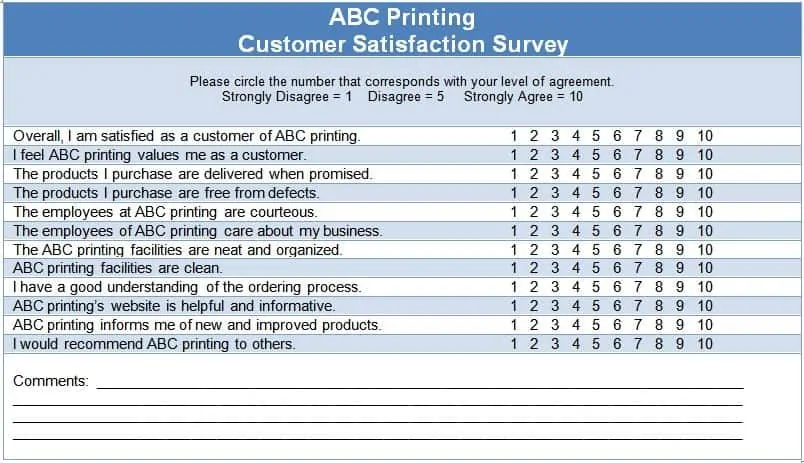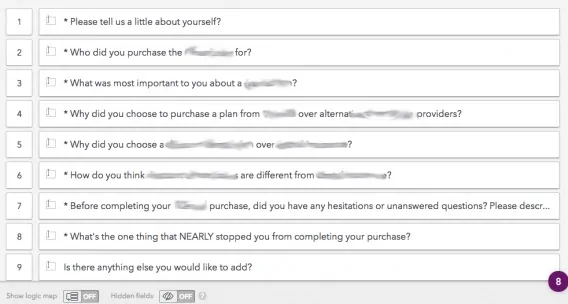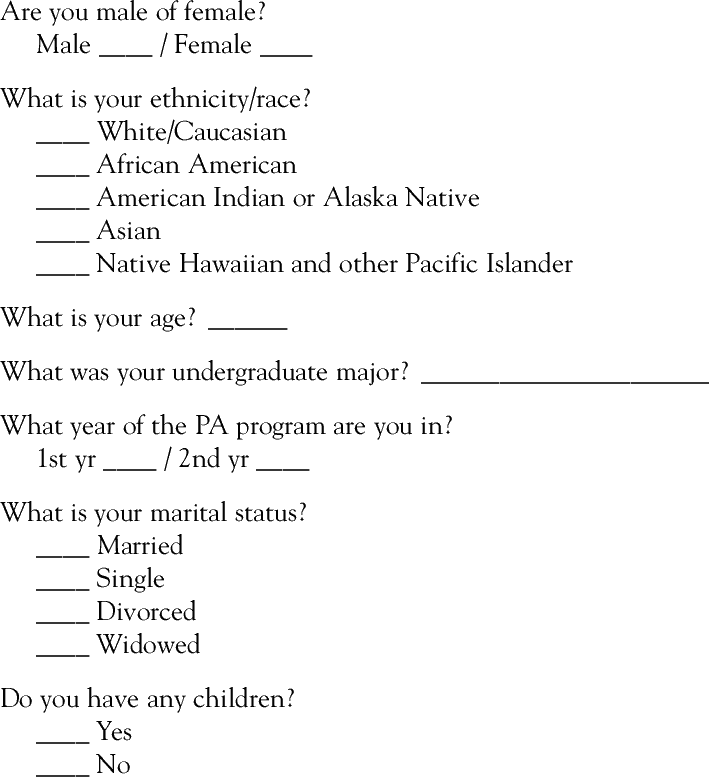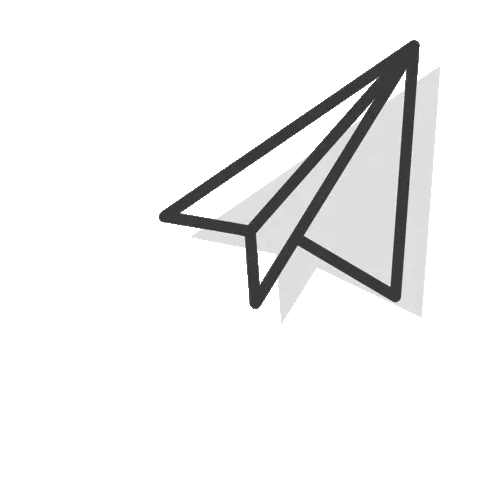Be it government, a for-profit organisation, or even a not-for-profit organisation, data collection is of paramount importance for all to get insights on the target market and the current and future prospects of an organisation.
You need to ask questions to get answers, and a questionnaire helps you just with the same.
What is A Questionnaire?
A questionnaire is a research instrument consisting of a set of standardized questions to gather statistically useful information on some subject from one or more respondents.
To make it simple, consider questionnaire to be written interview consisting standardized questions which can be answered face-to-face, over the telephone, through the post, or even online.
Purpose Of Questionnaire
The main purpose of a questionnaire is to extract data from the respondents.
It’s a relatively inexpensive, quick, and efficient way of collecting large amount data even when the researcher isn’t present to collect those responses first hand.
But an important factor to note is that a questionnaire isn’t the process of analyzing the responses. The process is surveying.
Survey vs Questionnaire
A questionnaire just a set of questions used to gather statistically useful information from the respondents. It’s often considered as an important tool used in the survey process.
A survey, on the other hand, is a process which includes using a questionnaire to ask the questions, collect responses, and analyse them to get to a result. Analyzing and appraising are important aspects of a survey which makes it different from a questionnaire.
Questionnaire types
A questionnaire is a very useful tool to gather first-hand information from a large audience. It can be categorized into two types –
Descriptive Questionnaire
A descriptive questionnaire is developed to capture or document the extent of a particular topic or issue within a population of interest, that is, what exists at the moment. Questions in this questionnaire are usually focused on how many people participate in a certain behavior or hold a particular opinion.
An example of a descriptive questionnaire would be a questionnaire to calculate the percentage of people who vote and people who don’t.
Analytical Questionnaire
An analytical questionnaire is developed to explore and explain relationships between particular concepts, that is, why certain situations exist. Analytical questionnaires usually examine two or more variables and are used in theory building and hypothesis testing.
An example of an analytical questionnaire would be a questionnaire to examine the interrelationship of lifestyle with TV viewing habit.
Types Of Questions In A Questionnaire
Now, both descriptive and analytical questionnaires include a set of questions that also be categorized into two types. These are –
Open-Ended Questions (Unstructured)
These include qualitative questions which are more open and allow the target audience to voice their feelings and notions openly. Such questions record more data as they don’t have a predetermined set of responses and the respondents express their opinions in a free-flowing manner.
Not having options to choose from results in avoiding bias and getting actual answers from the respondents.
Qualitative questions, however, prove to be hard from the researcher’s side as different respondents usually have different opinions and it becomes hard to process the qualitative data.
Open-ended questions are usually used –
- At the time of the interview
- To collect data about the personal lives of the respondents like beliefs, family relations, motivations, etc.
- To ask questions to get opinions or views about an aspect.
Examples of such open-ended questions are –
- Suggest your opinion to reduce plastic pollution in urban cities.
- How can we reduce the men-women pay gap?
Close-ended questions (structured)
Structured questions have multiple options as answers and ask the respondents to choose either one or more than one option as an answer. Close-ended questions are used to conduct quantitative research.
Such questions are definite and are usually prepared well in advance so as to get as many responses and information from the respondents.
Open-ended questions are usually used –
- To get feedback on a product, service, policy, etc.
- To collect data that can easily be structured into options.
Examples of such close-ended questions are –
- How do you rate the services of your library?
- How much satisfaction do you get from your job?
Importance of Questionnaire
Questions are considered to be of vital importance for research, feedback, and control. A survey without a questionnaire is as incomplete as a dish without ingredients.
A questionnaire is an effective tool to measure the attitudes, beliefs, behavior, preference, opinion, and intentions of a relatively large number of people with respect to one or more than one specific subjects.
Questionnaire Advantages And Disadvantages
Designing and using a questionnaire has its own perks and cons. The advantages of questionnaires include –
- Inexpensive way of collecting data.
- Generates a large amount of data.
- Usually has an easy-to-understand and easy-to-respond design which makes it easy to understand and respond to.
- The responses can be easily quantified. It can also be used to compare and contrast other research.
- It’s easy to analyse the results of a questionnaire.
- The qualitative and quantitative data collected from a questionnaire helps the surveyor to create new strategies and learn about the trends in the audience.
- Questionnaires often let its respondents maintain their anonymity.
- It’s not always necessary to have a personal touch while getting the responses from the respondents.
However, questionnaires have many disadvantages too, like –
- Respondents are sometimes dishonest while answering the questions.
- When it comes to open-end questions, it becomes difficult to understand and interpret the responses.
- A questionnaire isn’t a perfect tool to know about the feelings and emotions of the respondents.
- Lack of personalization demotivate the respondents and many don’t even respond to it.
How To Make A Questionnaire?
Making a questionnaire isn’t an uphill struggle if you are clear about your questionnaire agenda and your target respondents. Here are the four steps you need to follow to design a good questionnaire –
Identify Your Research Aims And Questionnaire Goals
Identify the purpose of your questionnaire and develop a hypothesis you need to test by asking questions. This forms the base of your questionnaire.
Define Your Target Market
The next task is to define who you’ll be asking those questions. Questionnaires only give results when the questions are asked to the right people – those who relate to the questions in some way or the other.
Decide The Medium To Collect Responses
It’s an important task of questionnaire designing. Try to ask questions from your target audience where they actually are.
Remember that they won’t get out of their comfort zone to fill your questionnaire.
Build Your Set Of Questions
Once the questionnaire objective, target respondents, and delivery medium are defined, it becomes easy to list down the questions.
Choose from a mix of open-ended and close-ended questionnaire questions and only include questions that are absolutely necessary. Questionnaires often become boring if unnecessary questions are added to it.
Try not to use technical terms or jargon as much as possible. Also, make sure to optimize each question separately yet build a logical sequence to your questionnaire to make the transition from one question to another as smooth as possible.
Questionnaire Examples
Here are a few questionnaire examples to help you develop your own questionnaire without much hassle.
Customer Satisfaction Questionnaire

Psychographics Questionnaire

Demographic Questionnaire

Go On, Tell Us What You Think!
Did we miss something? Come on! Tell us what you think about our article in the comments section.
A startup consultant, digital marketer, traveller, and philomath. Aashish has worked with over 20 startups and successfully helped them ideate, raise money, and succeed. When not working, he can be found hiking, camping, and stargazing.









